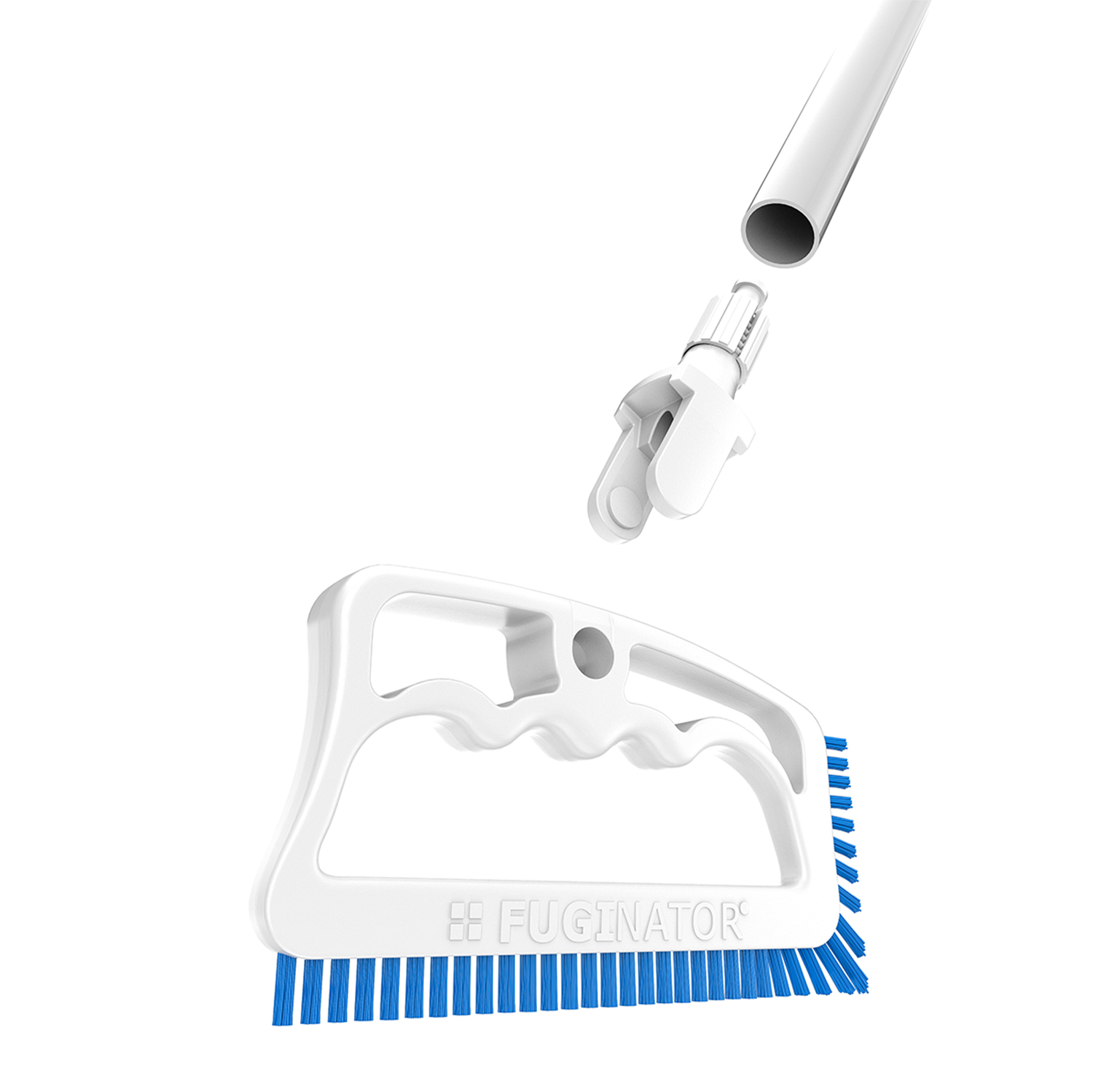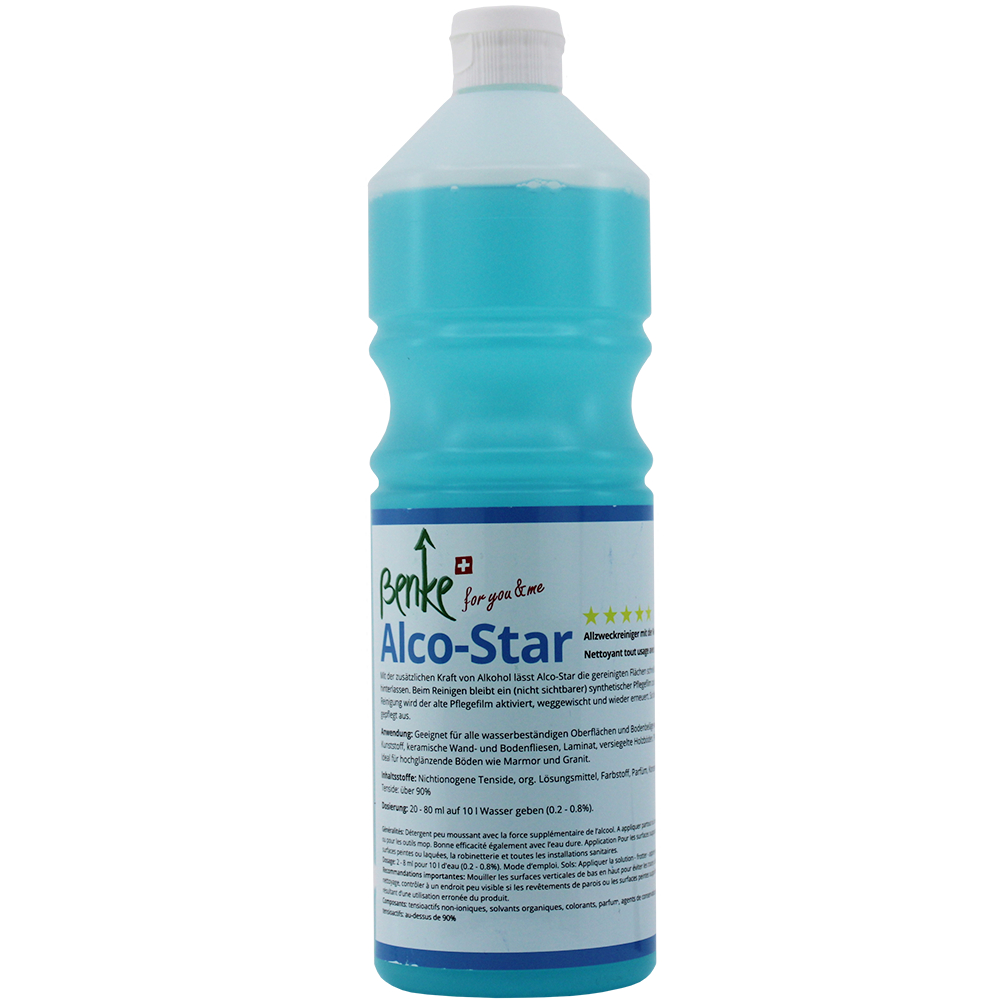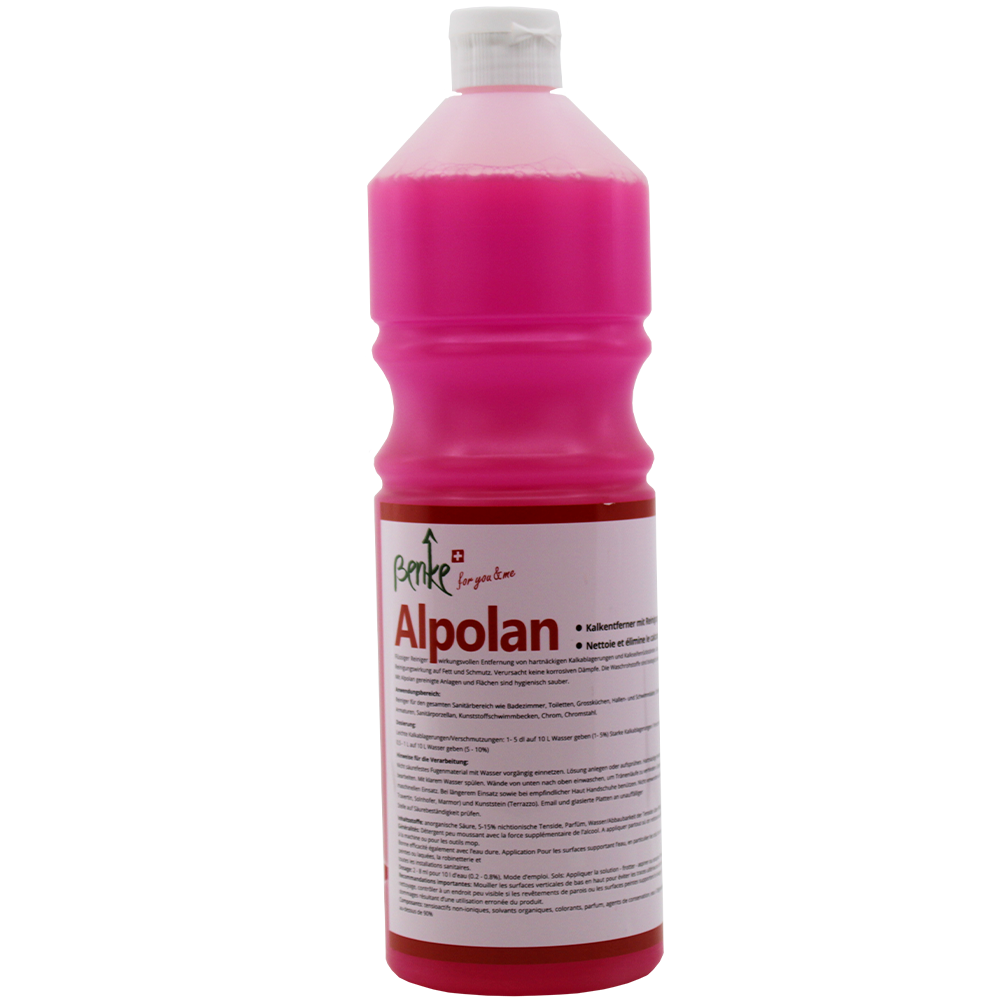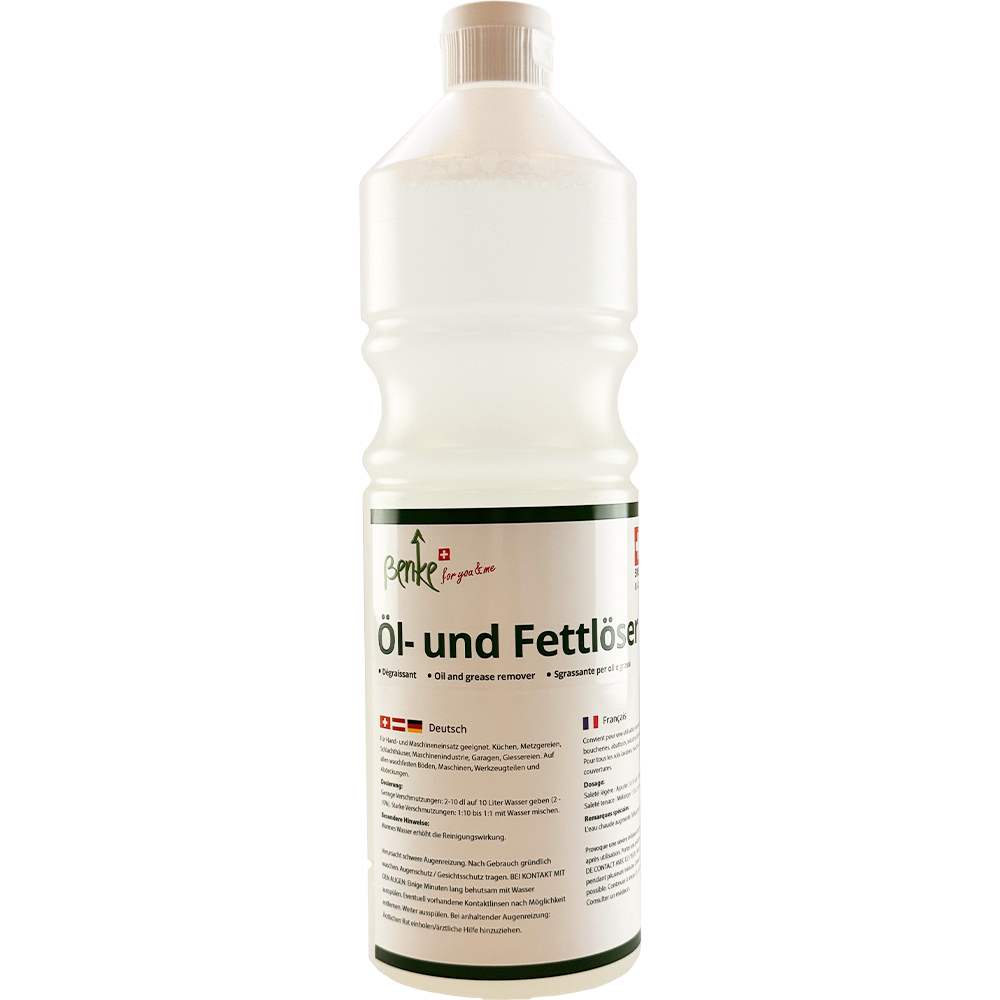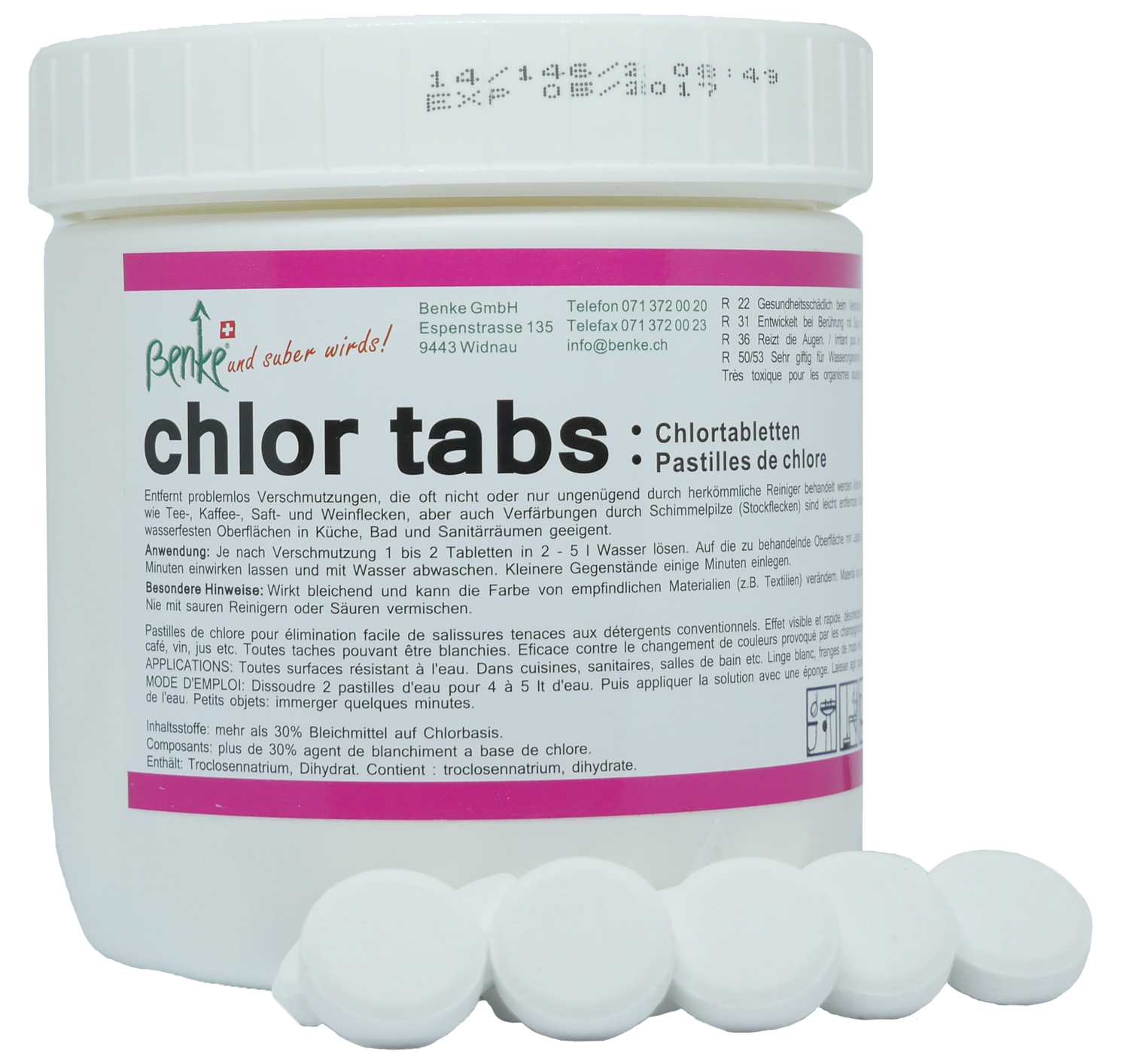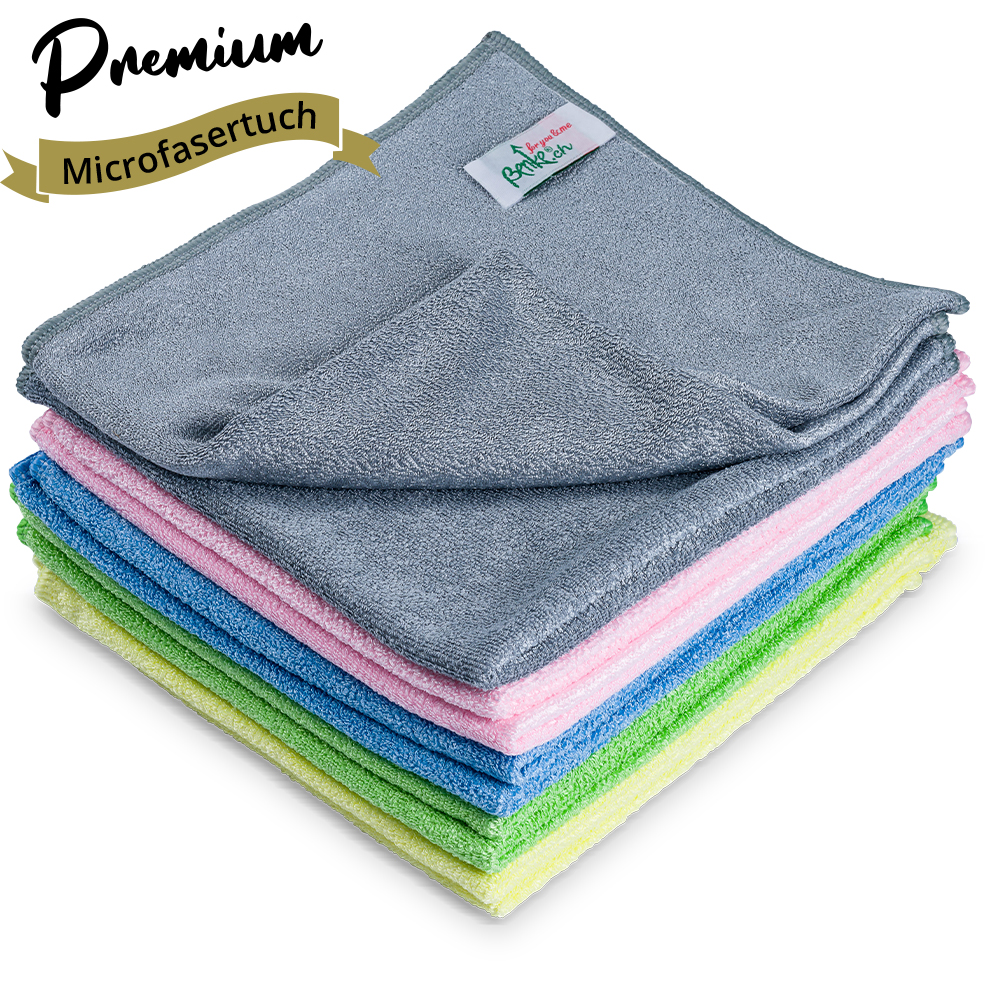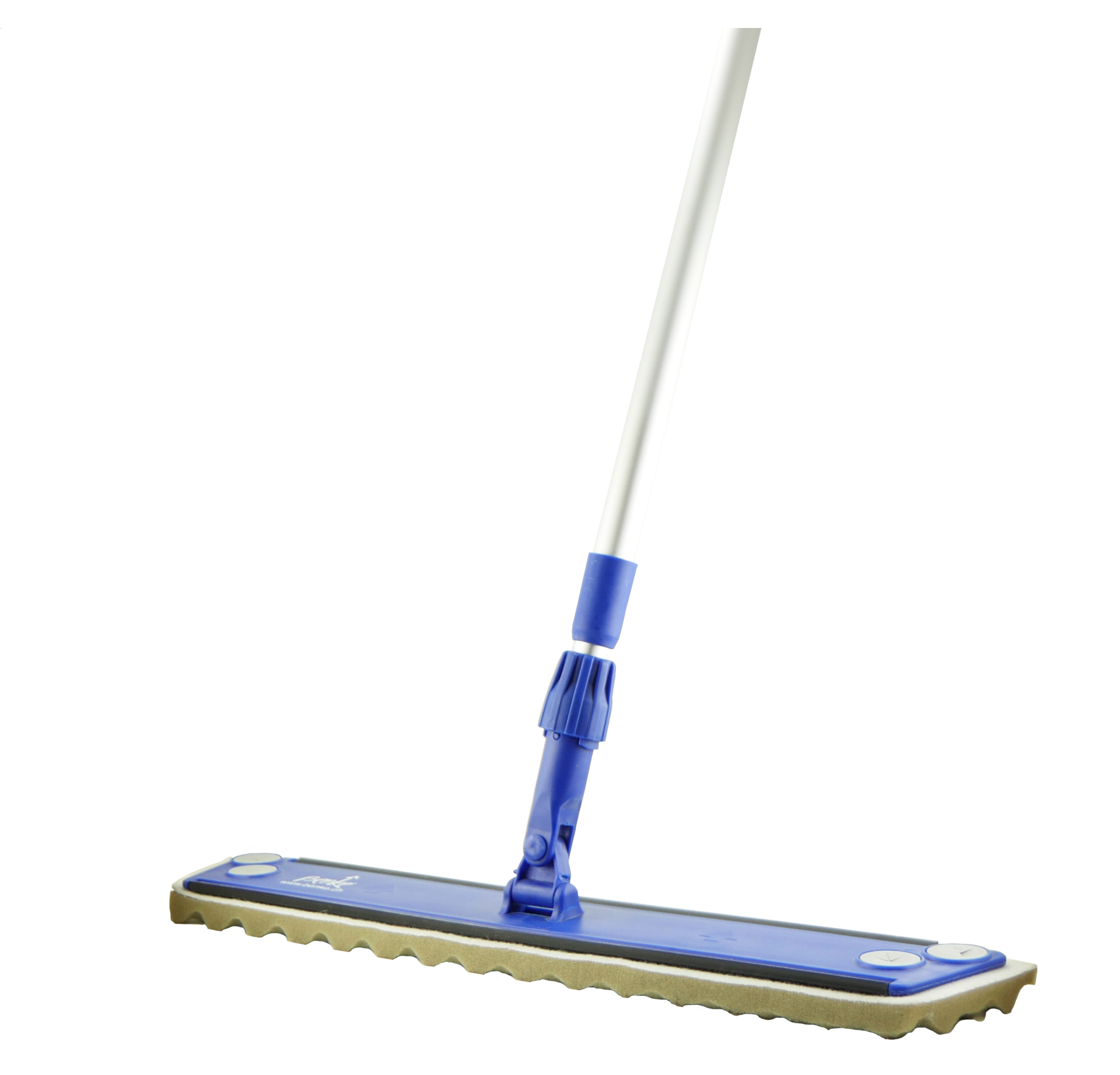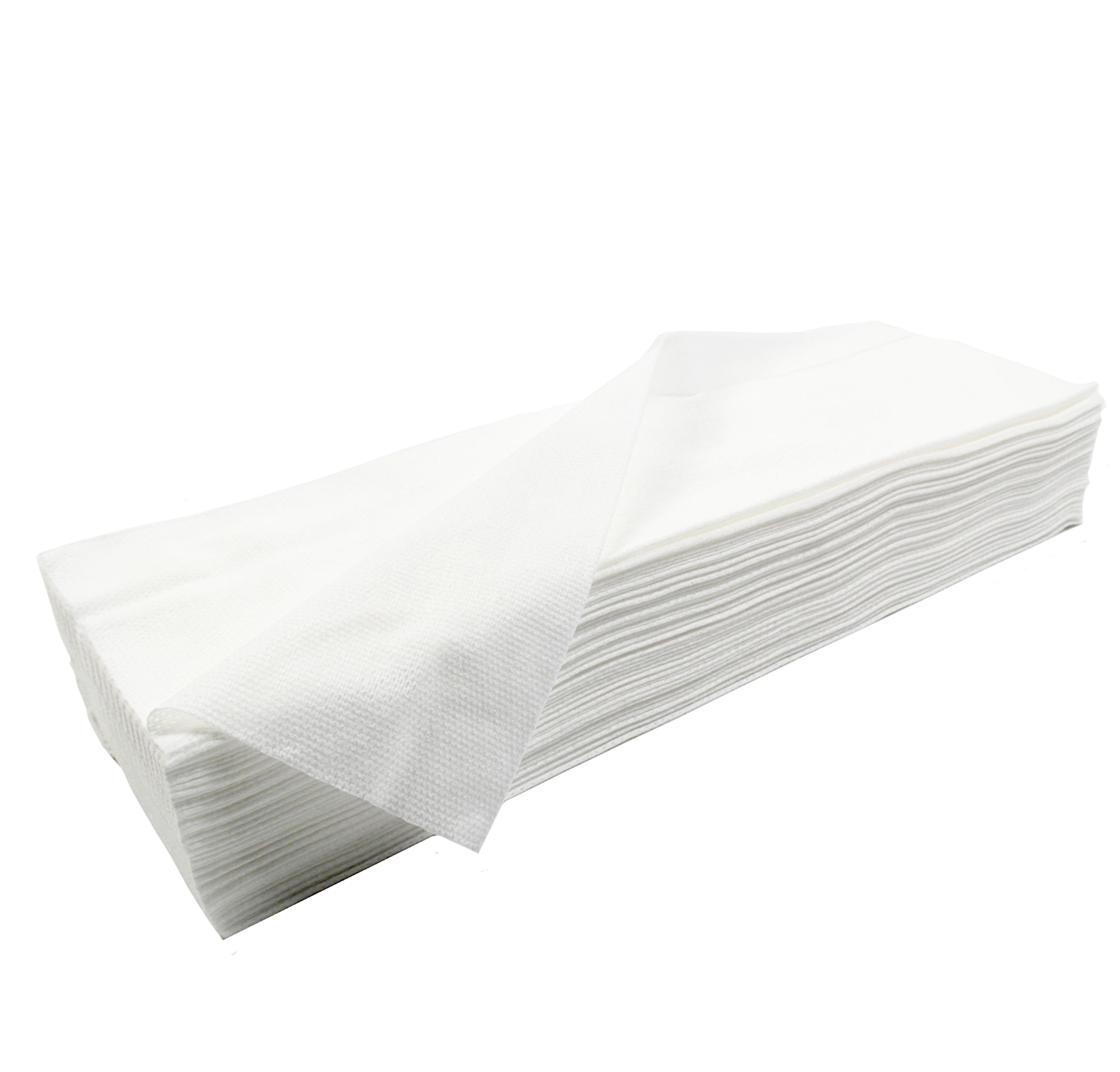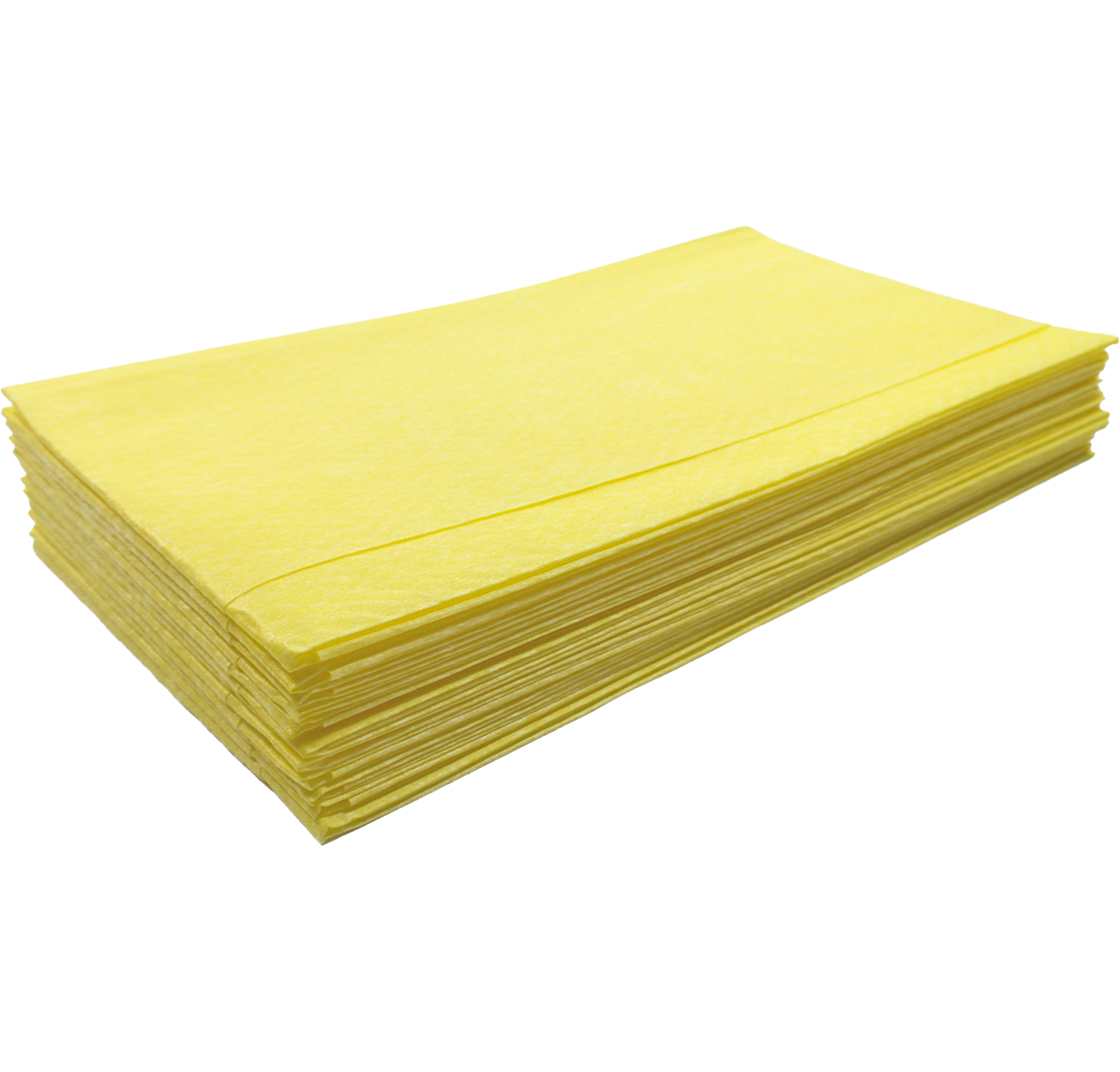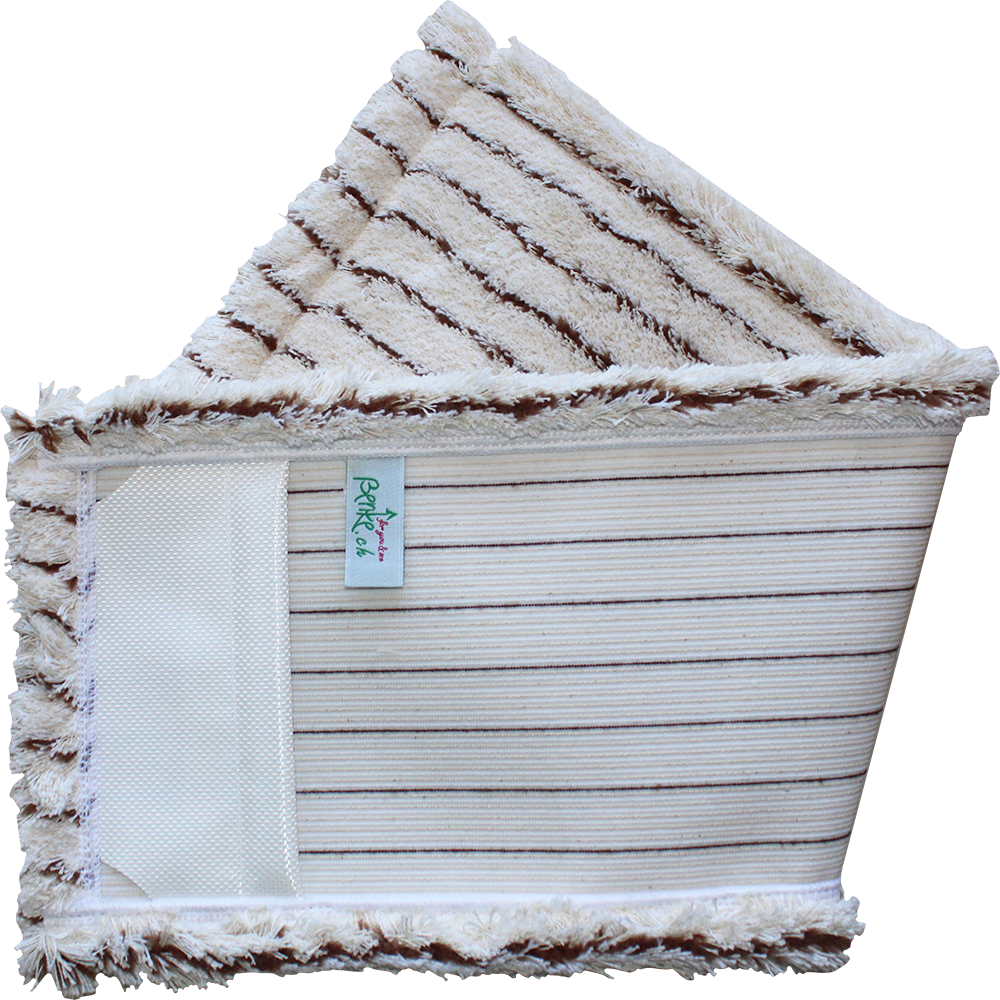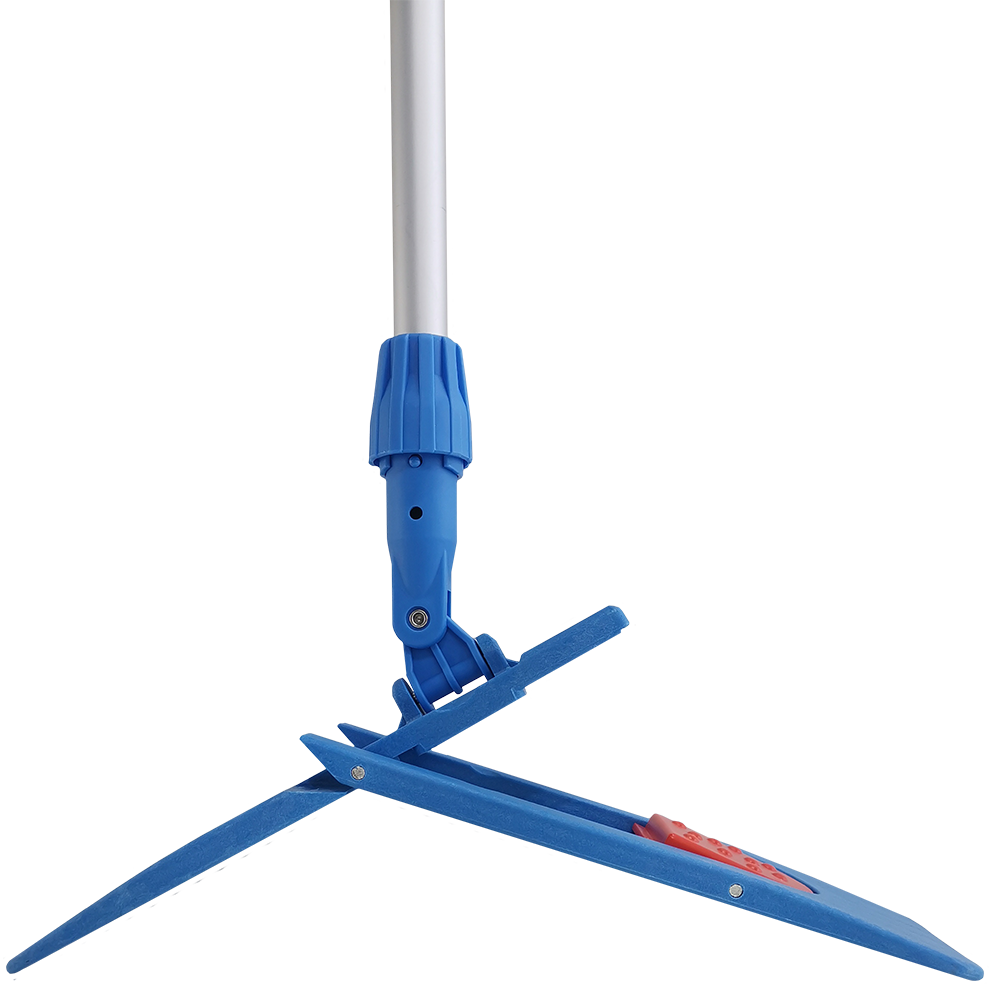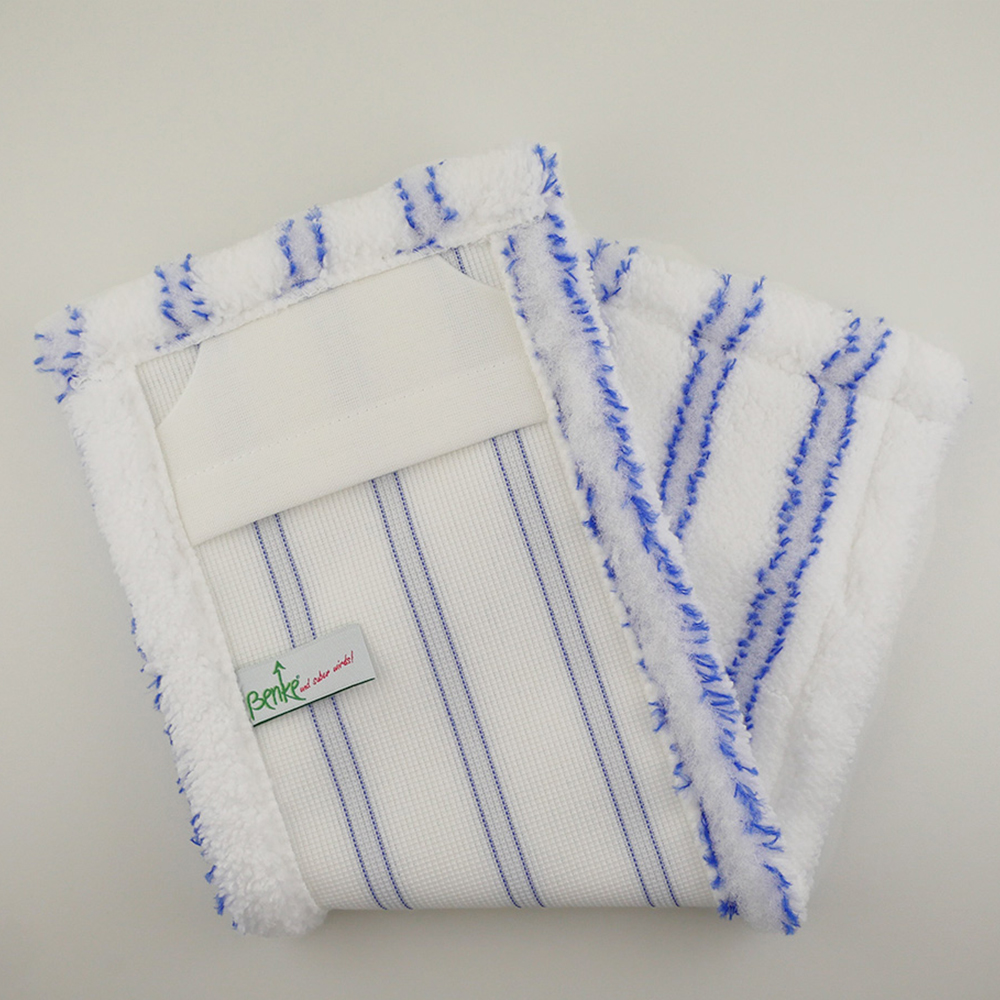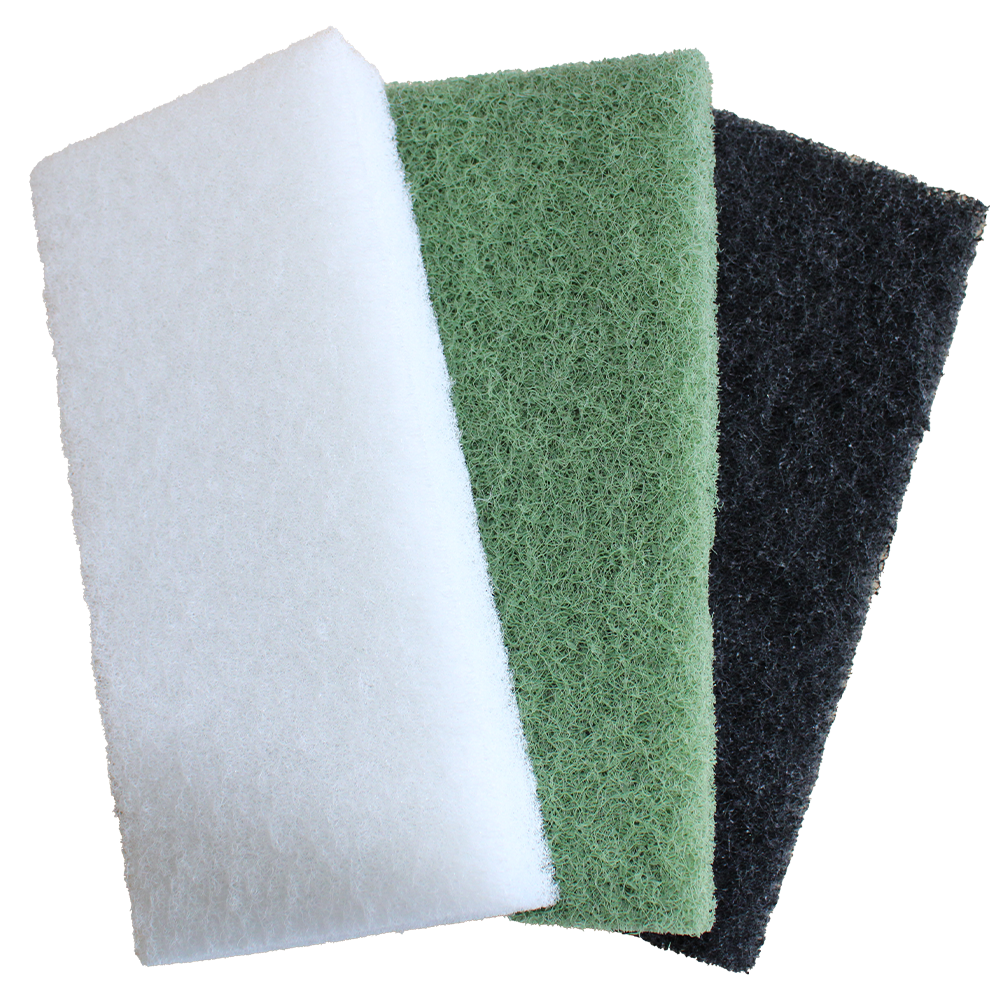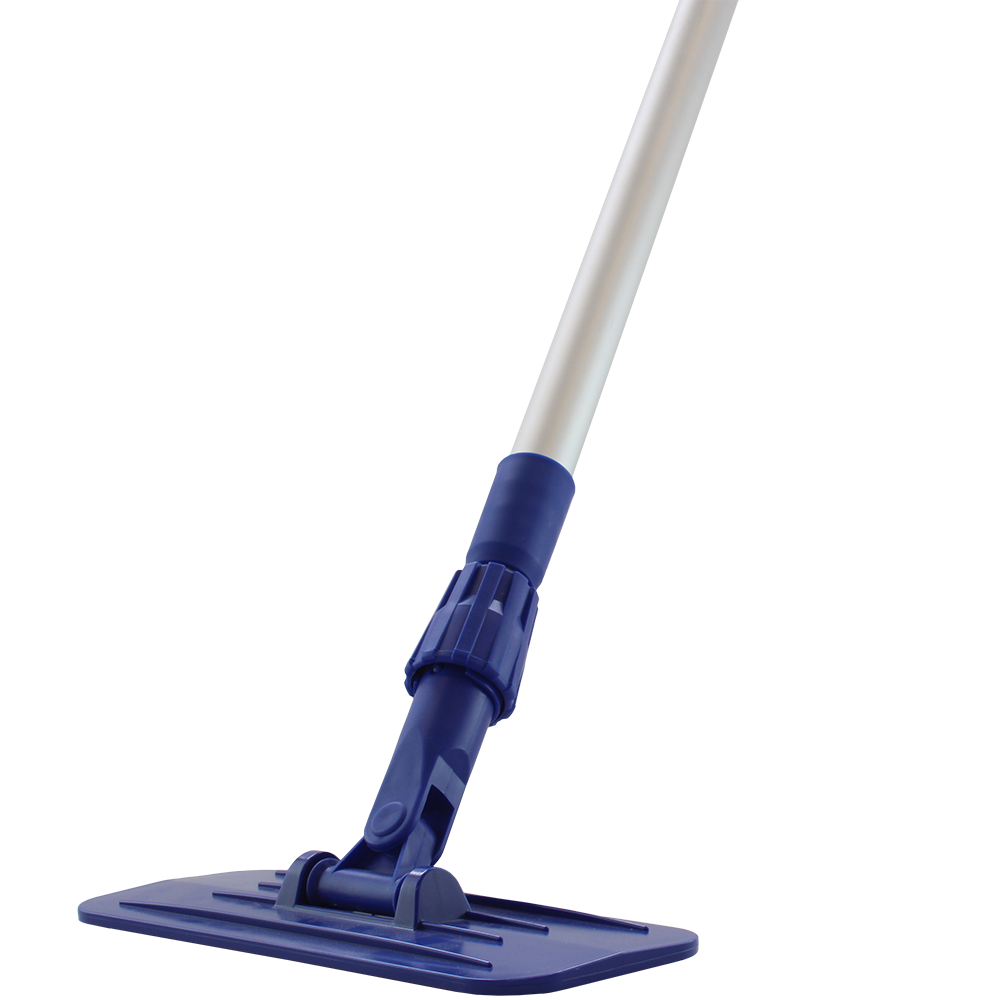Tiled floors

Tiled floors and walls – proper cleaning
Tiles are made from finely processed ceramic raw materials fired at high temperatures. The resulting dense surfaces are durable and resistant. Proper care from the beginning ensures the full benefits of porcelain stoneware and guarantees many years of enjoyment.
Descaling and regular maintenance
With the powerful “Alpolan” descaler from Benke, limescale and soap residues are no longer a problem. Its unique formula removes all scale deposits without damaging fittings.
For regular maintenance, use our “Alco-Star”, which leaves a protective synthetic film that renews itself during each cleaning.
For best results, we recommend using the non-scratch sponge or the patented Benke grout brush for optimal cleaning results.

Deep cleaning for used or heavily soiled tiles
- For this process, use an alkaline basic cleaner such as Benke Oil and Grease Remover, which cleans with maximum efficiency. Apply the product using a mop, or for stubborn dirt, use a floor brush, edge cleaning device, or machine (ensure a non-scratch cleaning pad is used), and allow it to act briefly.
- Rinse thoroughly at least twice with clean water until all cleaner residues are completely removed.
To remove old limescale deposits, use a descaling agent such as Benke Alpolan. Apply the descaler undiluted with a cloth or sponge, clean using circular motions, rinse with water — and you’re done.

Removing mould from grout
The easiest way to prevent mould is to wipe the grout dry with a microfibre cloth after showering or bathing. Where there is no moisture, mould cannot grow. If mould is already present, it should be removed using chlorine (Benke chlorine tablets). Dissolve one chlorine tablet in hot water and apply with a microfibre cloth or grout brush. Allow it to act for about 1 hour, then wipe clean. For silicone joints with severe mould infestation, the sealant must be replaced.
Note:
Before cleaning cement joints, always pre-wet them!
Wooden floors

Dry cleaning
Dust and small stones can cause unsightly scratches on wooden floors. Moving furniture or walking with shoes creates a sanding effect. However, you can easily remove dust and dirt particles with a dusting cloth (see Dust Mop System video) or a vacuum cleaner. Be careful – a vacuum cleaner can scratch the surface, so use an appropriate soft brush attachment.
The major advantage of our dust mop system is that it allows you to clean under furniture easily – an area where dust, a major carrier of germs, often collects.

Wet cleaning
The wooden floor can now be cleaned with any suitable cleaning equipment. Use only synthetic cleaning agents (such as Alco-Star). They are cost-effective, care for the wooden surface, and do not leave any cleaning residue on the floor.
Always wipe your floors damp rather than wet, using a well-wrung mop, to prevent the wood from swelling due to moisture.
Marble floors

Marble floor coverings
Since marble is a very soft stone, it is important to remove coarse dirt and dust to prevent scratching caused by shoes, furniture, toys, etc. Dusting with dust cloths traps the dust instead of spreading it. Damp mopping with a microfibre mop removes dirt from marble surfaces gently, without the need for strong mechanical action.
Cleaning agents: Never use wax, acrylic, or soap-based cleaners. These products form a film as they dry, and each cleaning adds another layer. After a short time, the marble becomes dull, greasy, and slippery.
Use only synthetic cleaning agents. These leave a protective film when damp mopping, which reactivates and renews with each cleaning (for example, Alco-Star). This ensures lasting protection for your marble. Acid sensitivity:
Marble and limestone are composed of over 90 % calcium carbonate and therefore react to all types of acids.
PVC and linoleum floors

PVC floor coverings
Remove coarse dirt such as crumbs or small stones brought in on your shoes with a vacuum cleaner. Tip: vacuum regularly, as otherwise scratches may form on the surface. Afterwards, simply clean the floor with a damp mop.
Stripping and maintenance of PVC and linoleum floors
A professional and systematic cleaning and maintenance routine significantly contributes to the longevity of a floor covering. It is also one of the most important tasks in building maintenance. This applies especially to the basic cleaning or stripping of elastic floor coverings, for which there are two methods that differ in the use of machinery and the time required. First part of a series on mechanical floor cleaning. PVC or linoleum: material test using a bent and heated copper paper clip. Among the elastic floor coverings are, for example, PVC and linoleum. PVC (polyvinyl chloride) is a synthetic, elastic covering that is highly durable and resistant to water, alkalis and acids. Linoleum, on the other hand, is a natural product made from raw materials such as linseed oil, cork, and a jute backing. This covering is only partially resistant to alkalis.

Basic cleaning
First, loose dirt is removed with a broom or vacuum cleaner. The stripping solution – which must not exceed a pH value of 9 in the case of linoleum – is then applied in strips using a single-disc machine. During the reaction time (about 10 minutes), the floor covering is scrubbed several times in overlapping circular motions to ensure even removal. The concentration should range between 10 and 25 percent depending on the thickness of the coating. It is important to ensure that the solution does not dry out during application and processing, otherwise the stripping process will stall. Therefore, working in sections and adding more solution as needed is recommended. For edges and corners that cannot be reached by the machine, a hand pad is used. Once all coating residues have been dissolved, the next step is to vacuum up the dirty solution with a powerful wet/dry vacuum cleaner. Afterwards, allow the floor to dry completely. For natural linoleum, the drying time should be several hours or even overnight, ensuring adequate ventilation.

